Stoney’s British Pub
3007 Concord Pike
Wilmington, DE
7:30pm
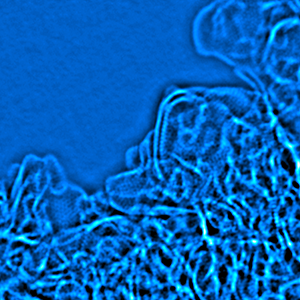 Erich Stach
Erich StachMaterials Science & Engineering, University of Pennsylvania
“Understanding the Structure of Materials Atom By Atom”
Every material is composed of building blocks of atoms: the arrangement in space and the chemical bonds that hold them together are what give materials their specific properties. I will talk about how we use a special type of microscope – a transmission electron microscope – to take pictures of atoms, and to understand the chemical bonds that hold them together. These microscopes are very fascinating instruments (and very expensive and sensitive too), so I will describe how they work, the types of sophisticated environments they need and how at Penn we are installing 3 absolutely world-class instruments at the Singh Nanotechnology Center to advance our understanding of a broad range of man-made and biologically engineered systems.
The Black Sheep Pub
247 S. 17th Street
Philadelphia, PA 19103
6:00pm
 Arjun G. Yodh
Arjun G. YodhPhysics & Astronomy, University of Pennsylvania
“Coffee Rings”
In this talk, I will discuss the science needed to understand a drying drop of coffee. We will see that even this very simple effect depends on many factors, ranging from water evaporation and fluid convection within the drop, to tension at the air-water surface and pinning of the liquid-solid contact line onto the counter-top. This rich phenomenology is also important for practical applications related to coatings, printing, painting, and even genotyping. I will describe a series simple drying experiments, on increasingly more complex fluids, that reveal the zoology of physics ideas underlying this everyday occurrence.
The Black Sheep Pub
247 S. 17th Street
Philadelphia, PA 19103
6:00pm
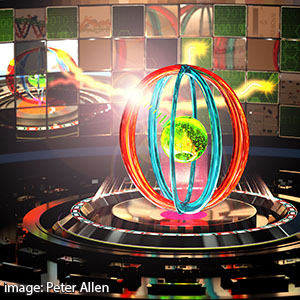 Lee Bassett
Lee BassettAssistant Professor, Electrical & Systems Engineering, University of Pennsylvania
“The Rise of Quantum Machines”
The semiconductor device components in our pockets are rapidly approaching the atomic scale, reflecting our astounding ability to construct almost anything we wish from the materials of our choice. For years, physicists and engineers have dreamed of leveraging that ability to build machines that exploit the strange laws of quantum mechanics, where information exists in an indeterminate state prior to measurement and has a capacity that scales exponentially with the number of quantum components. Now that future has arrived – rudimentary quantum computers exist in research labs around the world, and companies large and small are racing to develop the technology. Despite some hype, there is plenty of reason for excitement. Lee Bassett, director of Penn’s Quantum Engineering Laboratory, will discuss the basic physics underlying these new machines and their promise.
Stoney’s British Pub
3007 Concord Pike
Wilmington DE
7:30pm
 Lee Bassett
Lee BassettAssistant Professor, Electrical & Systems Engineering, University of Pennsylvania
“The Rise of Quantum Machines”
The semiconductor device components in our pockets are rapidly approaching the atomic scale, reflecting our astounding ability to construct almost anything we wish from the materials of our choice. For years, physicists and engineers have dreamed of leveraging that ability to build machines that exploit the strange laws of quantum mechanics, where information exists in an indeterminate state prior to measurement and has a capacity that scales exponentially with the number of quantum components. Now that future has arrived – rudimentary quantum computers exist in research labs around the world, and companies large and small are racing to develop the technology. Despite some hype, there is plenty of reason for excitement. Lee Bassett, director of Penn’s Quantum Engineering Laboratory, will discuss the basic physics underlying these new machines and their promise.
Stoney’s British Pub
3007 Concord Pike
Wilmington, DE
7:30pm
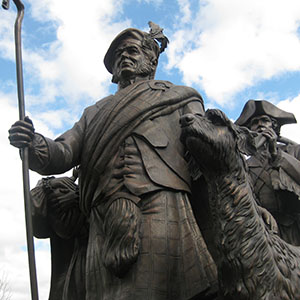 Andrew R. McGhie
Andrew R. McGhieAssociate Director Emeritus, LRSM, University of Pennsylvania
“Lost Wax Bronze Casting - Yesterday and Today”
This talk will cover the science behind the lost wax bronze casting process for a public statue and go through the complete process from the making of a maquette to the erection of the finished sculpture. Bronze casting started approximately 5,000 years ago and essentially goes through the same process today although modern materials have replaced Tin/Copper bronze and new ceramic shell technology has replaced clay. The more recent lost wax process has enabled multiple casting to be made from the original sculpture. Computer controlled milling has also enabled rapid enlargement of the maquette, reducing this process to hours instead of days. The whole process however can still take from weeks to months to complete.
The Black Sheep Pub
247 S. 17th Street
Philadelphia, PA 19103
6:00pm
 Erich Stach
Erich StachMaterials Science & Engineering, University of Pennsylvania
“Understanding the Structure of Materials Atom By Atom”
Every material is composed of building blocks of atoms: the arrangement in space and the chemical bonds that hold them together are what give materials their specific properties. I will talk about how we use a special type of microscope – a transmission electron microscope – to take pictures of atoms, and to understand the chemical bonds that hold them together. These microscopes are very fascinating instruments (and very expensive and sensitive too), so I will describe how they work, the types of sophisticated environments they need and how at Penn we are installing 3 absolutely world-class instruments at the Singh Nanotechnology Center to advance our understanding of a broad range of man-made and biologically engineered systems.
Stoney’s British Pub
3007 Concord Pike
Wilmington DE
7:30pm
 Dr. Sylvia Stevenson
Dr. Sylvia StevensonDuPont Advanced Printing
“How to Print Everything Else”
We’re all familiar with home and office printing on paper or photo-paper. And we’re hazily familiar with the concept of printing magazines, books, and newspapers. But what about everything else? What about all the items on the grocery store shelf that not only come in printed packages, but come in printed packages that include text, graphics, photo-quality images, and modern, vivid colors, AND look exactly identical? How is the printing done? Why does today’s Doritos bag look so much zippier than yesterday’s? Why is it important to maintain quality printing capability for retail packaging? And how does a cardboard box fit through a printing press?
Sylvia Stevenson, Technical Manager in Dow DuPont’s Advanced Printing business, will discuss these concepts, answer these questions, show samples, and demonstrate the Cyrel® flexographic printing technology used across the flexible packaging industry.
Stoney’s British Pub
3007 Concord Pike
Wilmington, DE
7:30pm
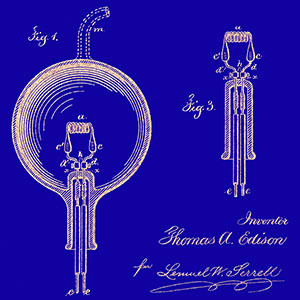 Prof. Vanessa Chan
Prof. Vanessa ChanMSE, University of Pennsylvania
“Why Start-ups and New Products Fail and How to Avoid It”
Commercializing technologies developed on the lab bench is the dream of many research scientists and engineers. However, to maximize the likelihood of commercialization, it is important to be aware of the failure modes that bedevil technologies when companies try to develop them into new products. Learn the main reason why new products fail through examples that span a wide range of companies and industries and take lessons from the ones that have succeeded. At the heart of this is how to bring to market something that is solving a real unmet need within an ecosystem that is primed to accept the innovation.
In this seminar, Dr. Vanessa Chan, will discuss what she’s learned as 1) a partner at McKinsey & Company helping Fortune 100 companies launch their new technologies 2) an entrepreneur launching her own invention and 3) an angel investor investing in technology led start-ups.
Stoney’s British Pub
3007 Concord Pike
Wilmington, DE
7:30pm
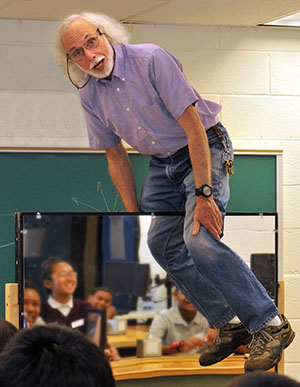 Bill 'Bunsen' Berner
Bill 'Bunsen' BernerPhysics & Astronomy, University of Pennsylvania
“It’s All Smoke and Mirrors: The Physics of Images”
Bill ‘Bunsen’ Berner is returning to Stoney’s for an encore performance. The behavior of mirrors and magnifying glasses will be demonstrated with some of the Physics Demonstration Lab’s best eye candy.
The how and why of image formation will be pursued with phantom light bulbs, levitating lecturers, a trip through the looking glass; and yes, even a smoke machine.
World Cafe Live
3025 Walnut Street
Philadelphia, PA 19104
6:00pm
 Prof. Vanessa Chan
Prof. Vanessa ChanMSE, University of Pennsylvania
“Why Start-ups and New Products Fail and How to Avoid It”
Commercializing technologies developed on the lab bench is the dream of many research scientists and engineers. However, to maximize the likelihood of commercialization, it is important to be aware of the failure modes that bedevil technologies when companies try to develop them into new products. Learn the main reason why new products fail through examples that span a wide range of companies and industries and take lessons from the ones that have succeeded. At the heart of this is how to bring to market something that is solving a real unmet need within an ecosystem that is primed to accept the innovation.
In this seminar, Dr. Vanessa Chan, will discuss what she’s learned as 1) a partner at McKinsey & Company helping Fortune 100 companies launch their new technologies 2) an entrepreneur launching her own invention and 3) an angel investor investing in technology led start-ups.
Stoney’s British Pub
3007 Concord Pike
Wilmington, DE
7:30pm
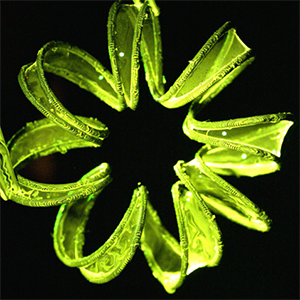 Dr. Tom Machon
Dr. Tom MachonPhysics, University of Pennsylvania
“Which Way is Up? Non-orientability in Physics”
Most surfaces have two sides. Think of a football: it has an inside and an outside. Some surfaces are special and have only one side. These are known as non-orientable surfaces, and perhaps the most famous example is the Möbius strip. In this talk I will explore the properties of non-orientable surfaces and how they relate to the physics of soap films and liquid crystals.
World Cafe Live
3025 Walnut Street
Philadelphia, PA 19104
6:00pm
 Prof. Douglas Jerolmack
Prof. Douglas JerolmackEarth and Environmental Science, University of Pennsylvania
“The Secret Life of Pebbles: how the history of Earth and other planets is encoded in pebble shape”
Rounded pebbles in rivers and beaches are as common as they are admired. Stunningly, similarly smooth pebbles have also been discovered on the surfaces of Mars and Titan. How do pebbles get this way, considering that they are born as angular fragments of broken rock? While this question was first pondered by Aristotle, an answer has only begun to emerge in the last decade due a surprising confluence of abstract mathematics, experimental physics and field geology. In this talk I consider the life cycle of a pebble, and show how its ‘maturity’ can be determined from its degree of roundness. I explore how progress on this esoteric problem informs our understanding of the early solar system, and current environmental issues.
World Cafe Live
3025 Walnut Street
Philadelphia, PA 19104
6:00pm
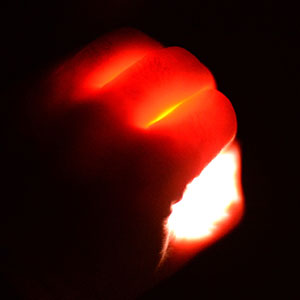 David R. Busch
David R. BuschPhysics, University of Pennsylvania
“From Flashlights to Brain Monitors, Diffuse Optics in Tissue”
When you cover a flashlight with your hand, why does it glow red? Tissue absorbs blue and green light, but red light passes through. Despite the red light, you can’t see bones. This talk will describe the whys behind these common observations and explain how optics can be used to measure and monitor the brain, without using ionizing radiation.
Stoney’s British Pub
3007 Concord Pike
Wilmington, DE
7:30pm
 David R. Busch
David R. BuschPhysics, University of Pennsylvania
“From Flashlights to Brain Monitors, Diffuse Optics in Tissue”
When you cover a flashlight with your hand, why does it glow red? Tissue absorbs blue and green light, but red light passes through. Despite the red light, you can’t see bones. This talk will describe the whys behind these common observations and explain how optics can be used to measure and monitor the brain, without using ionizing radiation.
Stoney’s British Pub
3007 Concord Pike
Wilmington, DE
7:30pm
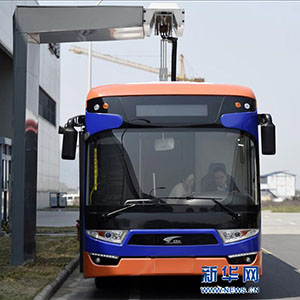 Jorge Santiago-Aviles
Jorge Santiago-AvilesUniversity of Pennsylvania
“The Importance of Batteries and Super Capacitors to the Electric Car and to an Efficient Power Grid”
Some important aspects of modern technology such as transportation and the efficiency of the power grid are strongly tied to new advances in charge storage technology. Most electric car manufacturers are attempting to obtain a range comparable to internal combustion driven cars, about 500 miles, and all are seeking the right battery / super capacitor for the task. Of course, load leveling, avoiding the cyclical increase in grid load due to seasons, and day / night load fluctuations are a most important concern. We will discuss batteries, energy and power densities and the two types of super capacitors used, electrical double layer and Faradaic.
